Forces of Change against Forces of Death: The Jean Rabel Massacre in the Radio Haiti Archives
July 22, 2016
Laura Wagner draws on documents and recordings from the Radio Haiti Archive to guide us through the tragic story of the Jean Rabel Massacre in northwest Haiti, which began on July 23, 1987.
By Laura Wagner
Laura Wagner, a scholar of Haitian history and culture, demonstrates how the materials in these archives can give us, nearly 30 years later, insights into how events were being experienced and analyzed in real time. We also see — and hear, in the linked audio files — the revolutionary potential of radio and the vision of Radio Haiti's founder Jean Dominique. Broadcasting in Haitian Creole and in French and committed to making sure that word spread in Haiti and around the globe about violent oppression in Haiti, Radio Haiti worked to give voice to the victims of that oppression. The archive is ensuring that those voices and stories can continue to be heard and retold today. While the full archive is still under development at Duke University's Rubenstein Rare Book & Manuscript Library, you can listen to more audio files on the pilot project site, Radio Haiti Lives. You can also find updates on the project on its Facebook page and Soundcloud site. This project is made possible through a generous grant from the National Endowment for the Humanities.
Father Jean-Marie Vincent was halfway around the globe, at a conference in Rome, when he received word that mass violence had broken out in the remote town of Jean Rabel in arid northwest Haiti on July 23, 1987.
The priest, part of the ti legliz (small church) liberation theology movement, had been working with the grassroots peasants’ rights organization Tèt Ansanm (which later became Tèt Kole Ti Peyizan Ayisyen) in Jean Rabel for fourteen years. Upon hearing that scores of Tèt Ansanm members had been massacred in his absence, Father Vincent returned to Haiti as soon as he could, only to find it impossible to reach Jean Rabel. In the midst of what were surely desperate days, he spoke with Michèle Montas at Radio Haiti-Inter to try to make sense of what had happened, and to explain the seemingly unthinkable: that a group of poor farmers had slaughtered other poor farmers en masse.
“There is an alliance between the big landowners [in Jean Rabel] and Macoutes, who coerced the ti peyizan… to kill other ti peyizan malere [poor peasant farmers] just like them, who are agitating for justice and for their rights in this country.” In Jean Rabel, most of the land was controlled by a few families: the Lucas, Poitevien, and Richardson clans. As in most of Haiti, those landowners had long profited from their alliance with the Duvalier regime, while the landless peasants remained systematically oppressed.
Father Vincent was accustomed to violent opposition from those in power, and was unruffled by rumors about his own ideology and practices. “If I’m not there anymore... there won’t be anyone to bother the landowners anymore, and they’ll regain the same power they’ve always had over people in the area, everyone calling them Uncle, Papa, so they can buy them off, do whatever they want with them. So I think it’s natural that they attack me…They’ve come to my house already, that same Nicol Poitevien and [others], carrying machetes, they said they were going to kill me... But I don’t think that’s what’s most important. What’s most important is that peasants’ rights be respected, that they continue to be able to organize.” His voice was measured and calm, even comforting, infused with warmth and good humor despite the circumstances.
In his early forties, Father Vincent still had a boyish, lively face and the energy of the soccer player he had been in his youth. “If you’re mobilizing poor peasants to assert their rights, you aren’t going to make certain big families who have held political and economic power for more than forty years very happy, because they’re going to lose certain advantages, they’re not going to find workers to come and work their fields for only one or two gourdes [a few cents] anymore... They find that people are a little ‘disrespectful’ now, they find people aren’t docile anymore. The peasants have become a little too enlightened, and they say, ‘You, you’ve taken the blindfold of the peasants’ eyes.’ They don’t like that kind of work, obviously. They call that kind of work communism.”
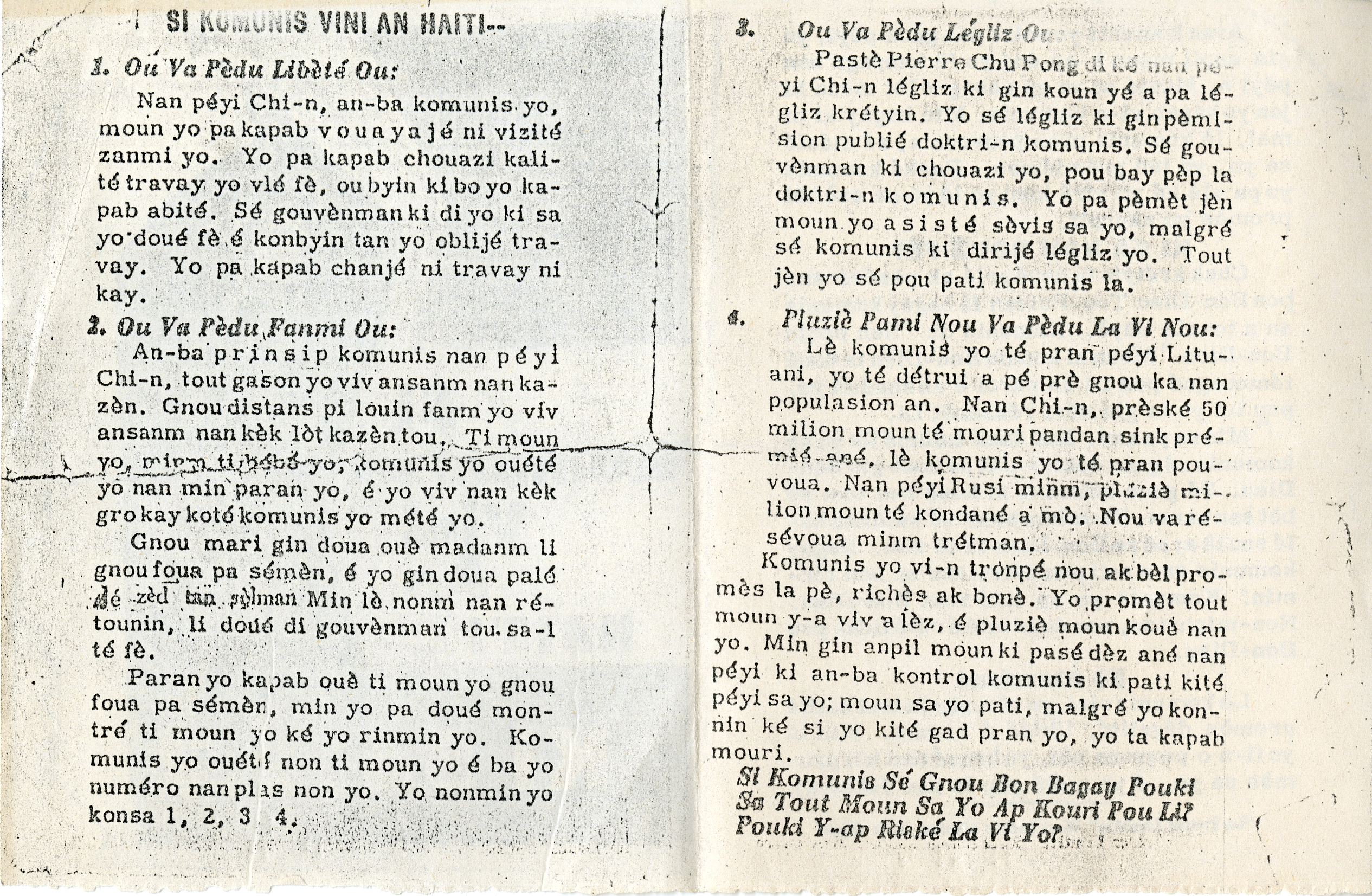
Undated anticommunist pamphlet distributed in the Haitian countryside. “If communists come to Haiti, you will lose your freedom…You will lose your family… You will lose your church… Many among you will lose your lives.” Printed by La Presse Lumière, West Indies Mission, Les Cayes. Source: Radio Haiti Archive
Jean-Marie Vincent’s analysis reflected not only the case of Jean Rabel, but also a wider reality about the Catholic Church’s moral and political identity in the 1980s, in Haiti as well as beyond. Liberation theology had emerged in Latin America in the 1950s and 1960s, focusing on poverty, human rights violations, and political oppression. For Jean-Marie Vincent and priests like him, following Christ’s example meant fighting against structures of oppression and injustice, against the tangible, worldly causes of suffering. Church authorities lashed out against liberation theology, in essence creating a battle for the soul of the Catholic Church.
The rise of and backlash against liberation theology in Haiti cannot be separated from the particularities of political context, for in Haiti, the “hierarchical Church” was associated with the powers-that-be: the Duvalier regime and their supporters and henchmen—the Macoutes. On February 7, 1986, the brutal right-wing Duvalier dictatorship had fallen after nearly thirty years in power, and the unsteady process of democratization cast Haiti into political uncertainty. For pro-democracy activists and human rights advocates, 1987 was filled with promise often overtaken by peril, a push-and-pull of freedom and repression. New political parties formed, while the army cracked down on the democratic movement. Although Duvalier was gone along with his death squads, the official Tontons Macoutes, Duvalierism nonetheless persisted, as did the Macoutes themselves. They were no longer formally designated Volontaires de la Sécurité Nationale, or VSN; now, “macoute” referred to members of the army, chefs de section and others who employed Duvalierist methods of domination and violence. Rural farmers, long oppressed under the Duvalier regime, began to organize. For the members of Tèt Ansanm and other grassroots peasant groups, the fall of the regime and the possibility of democracy represented an opportunity to at last reclaim their land and literally reap the fruits of their own labor.
—
The massacre began on July 23, but it lasted through the weekend and into the next week. Members of Tèt Ansanm hid in the brush – some survived, while others were found and slaughtered by the armed brigades. Those who had been injured were threatened at the hospital. Those who had been arrested were threatened at the prison. In the days that followed, members of Tèt Ansanm who had survived the massacre spoke on the radio. On Catholic-run Radio Soleil, they called on the Catholic Church authorities, the monsignors, the Red Cross, or any “moral person” to come with a convoy of cars to save the 120 or so people “who are left, whom they haven’t yet killed.” They declared it a duty for the Church to save them, and asked how many cars they could expect.
By July 28, 1987, two members of Tèt Ansanm who had survived the massacre made their way to Port-au-Prince and spoke with Michèle Montas on the air at Radio Haiti:
“It was a group of landowners that organized it, in La Montagne [in the commune of Jean Rabel],” explained Anne Jean-Louis. “They paid people 10 or 15 gourdes, to organize them to kill people.... [The landowners] are hiding behind them, they're hiding themselves to send those people out to fight for them.”
Noland Métayer described what had happened. “We went to go see our fellow peasants in La Montagne, near La Reserve. We were going to have a meeting between peasant and peasant. We were going to hold a demonstration. We came in solidarity with our brothers. But when we arrived, they didn’t accept being together with us. From the moment we appeared, we didn’t even have the chance to explain why we’d come. They began to attack us, to throw rocks at us, shoot bullets at us, shoot rifles. And that’s when everyone became afraid. There were four people who got shot, they got hurt, they died – I believe of the four who were shot, we only saw one. The others, they disappeared. After that, when we saw that we had come in friendship and they hadn’t accepted it, we turned to leave, and that’s when they ganged up on us, they cornered us on a path, they joined up with the Macoutes from Jean Rabel... They formed their brigades. They blocked a bunch of people on the path, they forced them to go to Jean Rabel. And there were a lot of other people who were hurt, who had broken bones, and they thought that in the town of Jean Rabel they would be safe. So they tried to get to Jean Rabel. But when they got to Jean Rabel, that’s where they really massacred them. They put them in prison, they put some in the hospital. But even in the hospital, they weren’t safe. The Macoutes, all those people, they entered freely whenever they wanted. They were threatening them, they were putting lots of pressure on them, and they told them that whenever a single one of them was released, they’d be watching them, and they’d be eliminated nonetheless. They are going to die nonetheless. All those people...” his voice trailed off.
Anne Jean-Louis described in harrowing detail her escape from the massacre. “I pulled myself together not to sleep on the street, I didn’t want to sleep at someone else’s house. If someone came and found me sleeping on their porch, they could beat me and I could die badly. I had already almost died. I managed to sleep in a corner of the hospital, on the ground behind a toilet.” Her brother Fadiné, also a member of Tèt Ansanm, was arrested. “They took him, they wounded him to the point that he was in the hospital. I tried to see him, then. Everyone was worried. They were already saying I’d been killed, that I wasn’t among the living anymore. They thought I was dead, and when they saw me on Friday they were shocked. As for Fadiné, he was inside the hospital, and there was no security. They were asking for members of the gwoupman in both the hospital and the prison. They blamed them for everything.... Their lives are in danger. They can’t sleep. People say there was a massacre on July 23, but that’s only when it started. It lasted Friday, Saturday, Sunday, Monday. They kept killing people.” In the interview, Anne Jean-Louis said she had last seen her brother in the hospital. She wanted to know what had become of him, but she was afraid that if she reappeared, she would be arrested and killed.
The two pleaded, again, for people to come and rescue the survivors. “The danger is still there,” explained Noland Métayer. “That's why we've left, because the lives of those people are in danger, we left to see if we could find any authorities, anyone who is mindful, if there's any possibility for them to rescue those people as soon as possible from the prison so they don't finish killing them all. That's why we left."
"If those people don't get out of the hospital tomorrow, we should buy our mourning clothes here... Even though we've already lost people, we don't want anyone else to die,” added Anne Jean-Louis. She requested perhaps thirty or forty cars, and asked that the rescuers come all at once, nan yon sèl kou, because if they came in shifts, those who were left behind would certainly be killed.
—
The events of July 1987 were strategic, born of long-standing anti-communism (which had been central to political strategy throughout the Duvalier years), the instability of the post-dictatorship landscape, and deepening divisions in the Catholic Church that pitted the church hierarchy, which was allied with the elites, against liberation theology priests like Jean-Marie Vincent, who worked alongside and promoted the rights of the poor.
Violence and discontent had been escalating for months in Jean Rabel. In February of 1987, the powerful landowning families had orchestrated the burning of peasant farmers’ homes in the nearby village of Gros Sable, though the wealthy landowners maintained that they were the true victims and accused Father Vincent and his team of fostering violence and communist ideology among the peasants. “The grassroots group is the arm of the movement, but the ekip misyonè [missionary team] is the head,” declared Rémy Lucas in an interview with Konpè Filo after the events in Gros Sable. When Filo asked Jean-Michel Richardson if he was affiliated with the Macoutes, his response was evasive and absurd. “That’s a strange question, because Tonton Macoutes don’t exist anymore, so I don’t see what relation I could have with the Tonton Macoutes.”
In the face of escalating oppression, Tèt Ansanm continued to demand their rights. Two days before the July 23 massacre, Tèt Ansanm issued a kout lambi [call to action]. Over drumbeats, a member of Tèt Ansanm invoked the revolutionary spirit of Jean-Jacques Dessalines and Charlemagne Péralte and called on rural cultivators, grassroots groups, and ti legliz members throughout Haiti to come together to uproot the spirit of Macoutism.
—
In the aftermath of the massacre, journalists and human rights advocates tried to understand its roots. It was not immediately clear what had happened, nor exactly how it had happened. The independent press could not reach Jean Rabel, and so Radio Haiti’s only option was to speak to people who had managed to approach the area. In an Inter-Actualités Magazine special report on Jean Rabel, Jean Dominique sat with Chavannes Jean-Baptiste and Michèle Pierre-Louis, and they tried to comprehend a situation in which, as Jean-Baptiste put it, “the little dog eats the little dog, poor peasants are killing poor peasants just like themselves.” Agronomist and activist Jean-Baptiste described the unrelenting propaganda campaign to convince the rural peasantry that Father Vincent was a communist, and that the communists were going to seize their land, their homes, even their wives. Michèle Pierre-Louis, who at the time was with the literacy program Mission Alpha, described a devastated landscape filled with incinerated houses, and the conflict between the peasant farmers and the landowners as a battle between good and evil. “This is what’s happening in this country, a face-off between the forces of change and the forces of death. There are certain forces, it is death they are spreading. That is their lifeblood and their source of power. And there are forces that are demanding change, and those are the forces of life. This is what is happening now. And all the forces that worship death, as we say, are coming into action now.” “Forces de changement contre forces de mort,” repeated Jean Dominique. “Michèle has defined it well for us. What has happened in Jean Rabel, and what is at risk of happening to the rest of the peasantry.”
From the studios of Radio Haiti-Inter in Port-au-Prince, Dominique used his razor-sharp analysis to piece the story together and explain the political context of the slaughter to listeners throughout the country. He demonstrated that the Jean Rabel massacre was not spontaneous, and the manipulation of the poor and landless by the region’s powerful landowners was not an extraordinary act of brutality and avarice. “Jean Rabel is not an isolated case. Jean Rabel is not an exception. At the heart of Jean Rabel are problems that are taking place among all the Haitian peasantry, and, alas, throughout the whole Church, as well.”
—
On August 28, 1994, Jean-Marie Vincent was gunned down in a rainstorm in front of his rectory in Port-au-Prince. He was forty-eight years old. No one has been held accountable for his assassination. There has been no justice for Jean-Marie Vincent, just as there has been no justice for most of the victims of the “land conflicts” and politically-motivated massacres of which Jean Rabel was only one. Twentieth-century Haitian history is inscribed with the names of the recognized dead and with a litany of locations (Cazale, Jean Rabel, St. Jean Bosco, Piatre, Ruelle Vaillant, Gervais, Raboteau, Carrefour-Feuilles…) which have come to stand for the untold numbers of dead, mostly poor, whose names are largely unknown.
Yet they are not erased. Their voices persist, in Radio Haiti’s archive. "Is Gwoupman Tèt Ansanm going to be destroyed by this?” asked Jean-Marie Vincent in his July 28, 1987 interview at Radio Haiti. “I don't believe it! I don't believe that." He laughed a little, a laugh that somehow contained exasperation, sadness, and hope all in one. "There is no people who will accept wearing chains forever. The solution for Haiti cannot come about through anything other than grassroots organization.... Are these peasants going to be discouraged? Are these deaths going to make it so we can no longer work alongside them?... Or is the solidarity of the Haitian people so strong that Gwoupman Tèt Ansanm will not perish? That is what I most believe, myself…I believe that the peasants may die, but they will not disappear... I believe that the poor will have their day, and the Macoutes will indeed lose, one day.”
Interview excerpts in this post have been translated from Haitian Creole and French, and in some cases have been lightly edited for clarity. Banner image: Tèt Kole Ti Peyizan's 1989 commemoration of the massacre. Source: Radio Haiti Archive
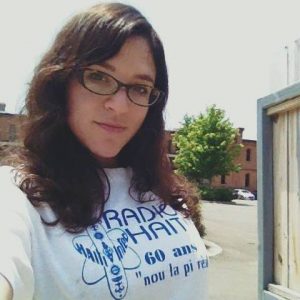
LAURA WAGNER, Ph.D., is the Radio Haiti project archivist at the Rubenstein Rare Book and Manuscript Library at Duke University. She received her BA from Yale University and her PhD in anthropology from UNC-Chapel Hill, where her research focused on the aftermath of the 2010 earthquake in Haiti. She is also a fiction and nonfiction writer; her first novel, Hold Tight Don’t Let Go, was published in 2015.
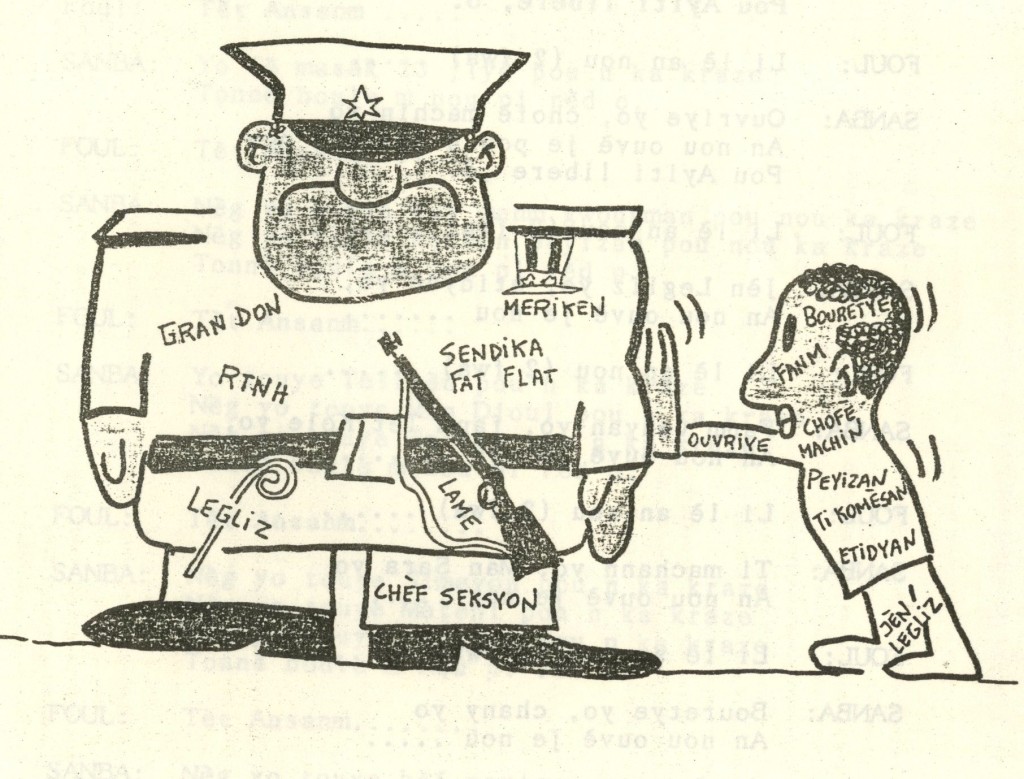

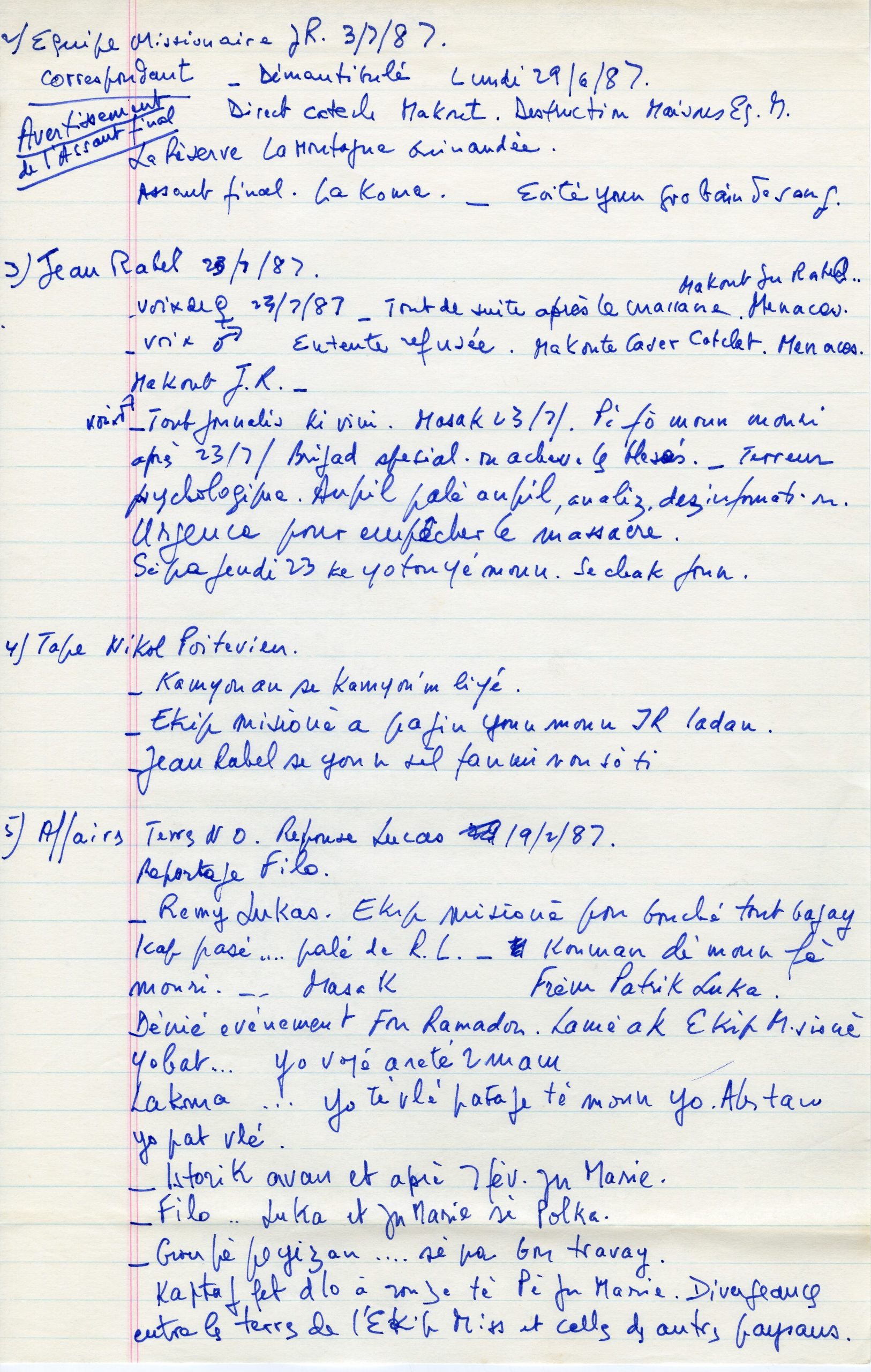
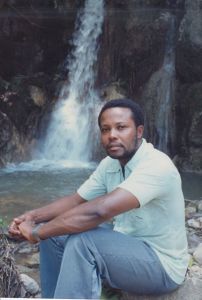
check us out
on social media